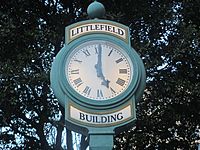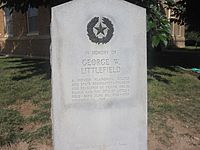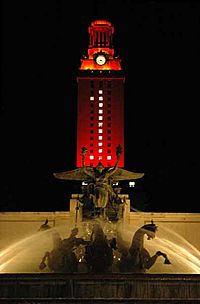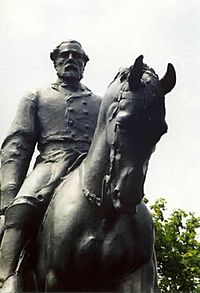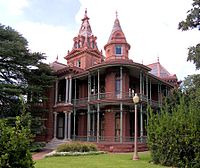George W. Littlefield facts for kids
Quick facts for kids
George Washington Littlefield
|
|
|---|---|
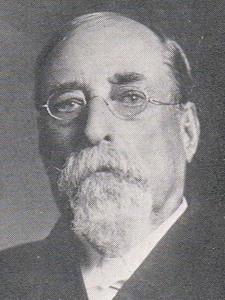 |
|
| Born | June 21, 1842 Panola County, Mississippi, U.S.
|
| Died | November 10, 1920 (aged 78) |
| Burial place | Oakwood Cemetery in Austin |
| Alma mater | Baylor University |
| Occupation |
|
| Political party | Democrat |
| Spouse(s) |
Alice Payne Tillar (1846–1935)
(m. 1863–1920) |
| Children | 2 |
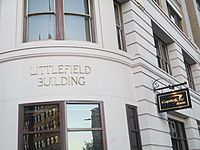
George Washington Littlefield (born June 21, 1842 – died November 10, 1920) was an important figure in Texas history. He was a brave soldier, a successful cattle rancher, a banker, and a leader at the University of Texas. Born in Mississippi, George moved to Texas with his family when he was a young boy.
Contents
Growing Up in Texas
George Littlefield was born on June 21, 1842, in Panola County, Mississippi. His family moved to Texas in 1850. They settled in Gonzales County, near the towns of Belmont and Leesville.
When George was 11, his father passed away. He attended Gonzales College and Baylor University for a short time. By 1860, his family lived closer to the town of Gonzales. At just 18 years old, George was managing his mother's large farm.
Serving in the Military
In 1861, George Littlefield joined the 8th Texas Cavalry. This group was also known as Terry's Texas Rangers. He started as a Second Sergeant. By January 1862, his fellow soldiers elected him as a 2nd Lieutenant.
He showed great leadership early on. He commanded his company at the Battle of Shiloh in Tennessee. He was not even 20 years old at the time. He was later elected Captain.
Littlefield continued to lead his company through major battles. These included the Battle of Perryville in Kentucky and the Battle of Chickamauga in Tennessee. After the Battle of Chickamauga in 1863, he became an acting major. He was seriously wounded in December 1863 and was promoted to major. Because of his injury, he left the military. He needed crutches to walk for several years.
A Successful Businessman
After the war, George Littlefield faced some tough times. His farming efforts did not go well, and floods almost caused him to lose everything. However, in 1871, he started investing in the cattle market and found success.
Over the next few years, he moved large groups of cattle from South Texas to Kansas. With the money he earned, he opened a store in Gonzales. He also bought many ranches across Texas and New Mexico. His cattle, marked with the brand LFD, roamed over a huge area. This area was about the size of the state of Rhode Island.
In 1883, Littlefield moved to Austin. He started the American National Bank in 1890 and was its president until 1919. The bank was very successful. Today, the Littlefield Building in downtown Austin is home to Capital One Bank. He also owned the Driskill Hotel for several years. He added the first electric lights to the hotel.
In 1901, Littlefield made his biggest cattle purchase. He bought 312,000 acres of land in Texas. He built a 130-foot-tall windmill there, which was thought to be the tallest in the world. He also founded the town of Littlefield on this ranch land.
Giving Back to the Community
In 1911, Governor Oscar Branch Colquitt chose Littlefield to be a leader (regent) for the University of Texas. He gave a lot of money to the university over the next nine years.
Littlefield was interested in politics but never ran for office himself. He believed in helping the university grow. He gave and left about $3 million to the University of Texas. This was more than anyone else had given in the university's first 50 years.
He felt that the history books used at the university focused too much on the Northern states. So, in 1914, he created the "Littlefield Fund for Southern History." This fund helped gather historical documents to write a more balanced history. Many books in university libraries today have his name on them because of this fund.
Littlefield also paid for the beautiful Littlefield Fountain on campus. It was built to honor soldiers. He also funded a dormitory for freshman women, which was named after his wife. He even commissioned statues of important historical figures, which were later moved by the university in 2017.
He left his home, the Littlefield House, to the university. Today, it is used for offices and special events.
Family Life
George Littlefield married Alice Payne Tillar in 1863. They had two children, but sadly, both passed away when they were babies. Because of this, George was very close to his nieces and nephews. He paid for all of their college educations. He also hired his nephews and their husbands to manage his many businesses.
George W. Littlefield passed away at his home in Austin on November 10, 1920. He is buried at Oakwood Cemetery next to his wife, Alice.
The city of Littlefield is named after him.
|


